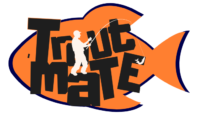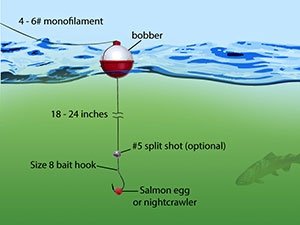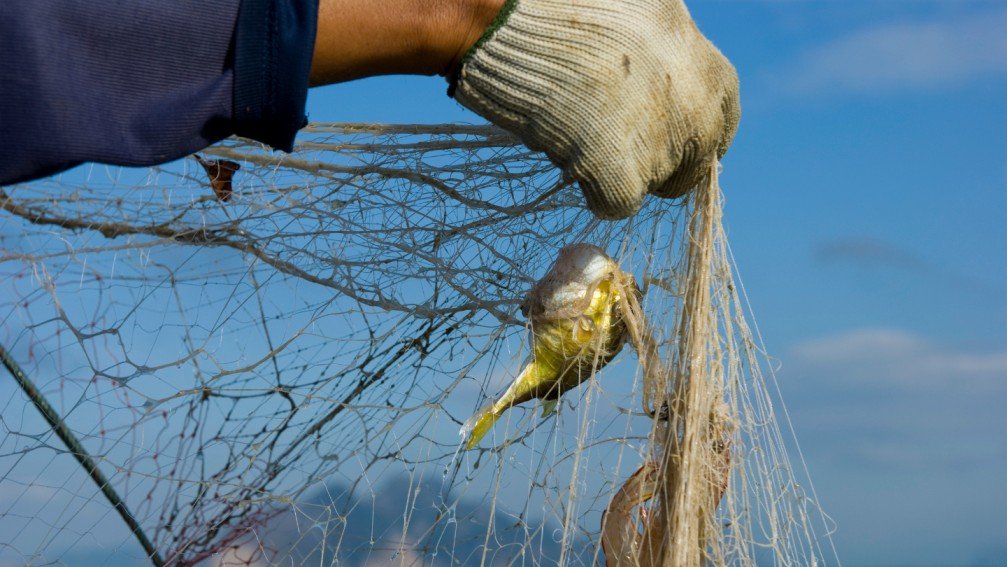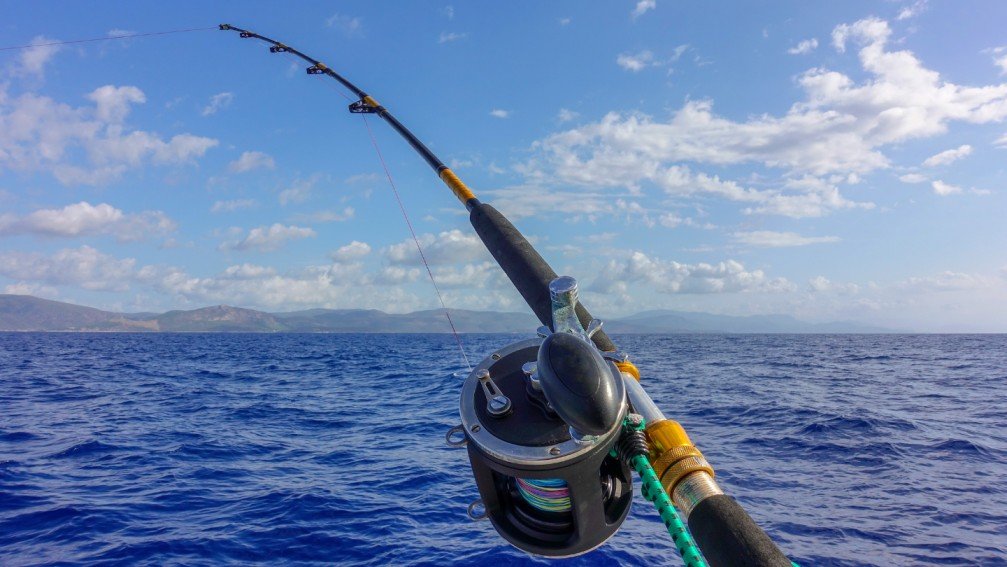Trout fishing is a delightful sport for many anglers. Setting up the right rig can make all the difference.
Learning how to set up a rig for trout fishing can seem daunting at first. With the right guidance, it becomes an enjoyable process. Trout are known for their elusive nature, making them a prized catch. A well-prepared rig increases your chances of success.
In this guide, we will walk you through the essentials. From choosing the right gear to assembling your rig, each step is crucial. By the end, you will be ready to cast your line with confidence. Let’s dive into the world of trout fishing and get you started on the right path.
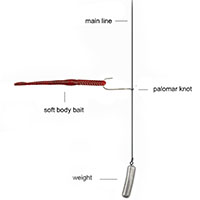
Credit: norrik.com
Choosing The Right Rod
Setting up a rig for trout fishing starts with choosing the right rod. A good rod can make a big difference in your fishing experience. Let’s dive into the details of rod length and rod power.
Rod Length
The length of your rod is crucial for trout fishing. A longer rod helps with casting distance and control. For trout fishing, a rod between 6 to 7 feet is ideal. This length allows for accurate casting in small streams and rivers.
- Shorter Rods (6 feet): Ideal for tight spots.
- Longer Rods (7 feet): Better for open waters and longer casts.
If you fish in small streams, a shorter rod is easier to handle. For larger rivers, a longer rod gives you more reach. Choose a rod length that fits your fishing environment.
Rod Power
Rod power refers to the rod’s strength or lifting power. For trout fishing, ultralight to light power rods are best. These rods bend more easily, making them sensitive to light bites.
| Rod Power | Best For |
|---|---|
| Ultralight | Small trout, delicate presentations |
| Light | Larger trout, more versatile |
Ultralight rods are perfect for small trout and delicate presentations. Light power rods are more versatile and can handle larger trout. Choose the power that suits your target fish and fishing style.
Remember, the right rod can enhance your trout fishing experience. Consider the rod’s length and power to make the best choice.
Selecting The Ideal Reel
Choosing the right reel is crucial for a successful trout fishing trip. The reel you choose can affect your casting distance, accuracy, and overall fishing experience. Let’s explore two popular types of reels: spinning reels and baitcasting reels.
Spinning Reels
Spinning reels are a top choice for many trout anglers. They are easy to use and versatile.
- Lightweight: Spinning reels are generally lighter, making them ideal for trout fishing.
- Ease of Use: They are beginner-friendly, perfect for newcomers.
- Line Management: Spinning reels offer excellent line control, reducing tangles.
Spinning reels come in various sizes. For trout fishing, a size 1000 to 2500 reel is ideal. These sizes provide the right balance of line capacity and weight.
| Reel Size | Line Capacity | Weight |
|---|---|---|
| 1000 | 2-6 lb | 6-8 oz |
| 2500 | 6-12 lb | 8-10 oz |
Baitcasting Reels
Baitcasting reels offer more control and precision. They are favored by experienced anglers.
- Accuracy: Baitcasting reels provide better casting accuracy.
- Power: They offer more power for handling bigger trout.
- Durability: Baitcasting reels are built to last, often with stronger components.
Baitcasting reels require more skill to use. They can be prone to backlashes if not handled properly. For trout fishing, choose a low-profile baitcasting reel. This type offers a good balance of comfort and performance.
In summary, both spinning and baitcasting reels have their benefits. Choose based on your skill level and fishing style. For beginners, a spinning reel is recommended. For those seeking more control, a baitcasting reel is a solid choice.
Picking The Right Line
Setting up a rig for trout fishing starts with picking the right line. The type of line you choose can make a big difference in your fishing success. Each type has its own advantages and disadvantages. Let’s explore two popular choices: monofilament lines and fluorocarbon lines.
Monofilament Lines
Monofilament lines are a favorite among trout anglers. These lines are made from a single strand of material, usually nylon. Monofilament lines are known for their versatility and ease of use.
Here are some key benefits of monofilament lines:
- Flexibility: They offer good flexibility, making them easy to cast.
- Affordability: Monofilament lines are budget-friendly, which is great for beginners.
- Visibility: Available in various colors, helping you see the line in the water.
Despite their benefits, monofilament lines have some drawbacks. They tend to stretch more than other lines. This can affect sensitivity and hook-setting ability. They are also less resistant to abrasion, which can be an issue in rough fishing conditions.
Fluorocarbon Lines
Fluorocarbon lines are another popular choice for trout fishing. These lines are made from a type of plastic called polyvinylidene fluoride. Fluorocarbon lines are known for their low visibility in water and high sensitivity.
Here are some key benefits of fluorocarbon lines:
- Invisibility: They are almost invisible underwater, making them ideal for clear water.
- Sensitivity: Fluorocarbon lines offer high sensitivity, helping you detect bites easily.
- Durability: They are more resistant to abrasion and UV light compared to monofilament lines.
Fluorocarbon lines also have some downsides. They are generally more expensive than monofilament lines. They can be stiffer, making them harder to cast and handle, especially for beginners.
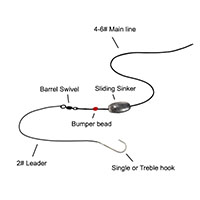
Credit: norrik.com
Essential Baits And Lures
Setting up a rig for trout fishing involves choosing the right baits and lures. The choice between live bait and artificial lures can make a huge difference. Both types have their own unique advantages and applications. In this section, we will explore the essential baits and lures to use for trout fishing.
Live Bait Options
Live bait can be very effective for attracting trout. Below are some popular options:
- Worms: Nightcrawlers and red worms are favorites. They are easy to find and inexpensive.
- Minnows: These small fish are great for larger trout. Use a small hook and gentle cast.
- Crickets: These can be irresistible to trout. Pinch them lightly on the hook.
- Waxworms: Ideal for colder waters. They’re small and wriggly, making them attractive to trout.
Artificial Lures
Artificial lures are versatile and can mimic the movement of live bait. Here are some common types:
- Spinners: These create vibrations in the water. They come in various sizes and colors.
- Spoons: Their wobbly motion attracts trout. Use shiny ones to catch their attention.
- Soft Plastics: These mimic worms and small fish. They are flexible and realistic.
- Flies: Perfect for fly fishing. They imitate insects that trout feed on.
| Live Bait | Artificial Lures |
|---|---|
| Worms | Spinners |
| Minnows | Spoons |
| Crickets | Soft Plastics |
| Waxworms | Flies |
Choosing the right bait or lure depends on the fishing conditions. Experiment with different options to find what works best. Happy fishing!
Setting Up The Rig
Setting up a rig for trout fishing is essential for success. A well-prepared rig can help you catch more trout. Let’s dive into the key elements: knots and connections, weight, and float selection.
Knots And Connections
Proper knots ensure that your line stays secure. A good knot can make the difference between a caught fish and a lost one.
- Improved Clinch Knot: This knot is reliable for tying hooks. It is easy to tie and holds firm.
- Palomar Knot: A versatile knot that works well with braided lines. It is simple and strong.
- Loop Knot: Useful for attaching lures and ensuring natural movement. It allows the lure to move freely.
Practice tying these knots to ensure they are secure. A poorly tied knot can ruin a fishing trip.
Weight And Float Selection
Choosing the right weight and float is crucial. The correct combination helps in presenting the bait naturally.
| Weight Type | Description |
|---|---|
| Split Shot | Small weights that are easy to adjust. Ideal for fine-tuning. |
| Egg Sinkers | Heavier weights for deeper waters. Suitable for bottom fishing. |
Floats help in keeping the bait at the desired depth. They also indicate bites.
- Bobber: A classic float that is easy to use. Perfect for beginners.
- Slip Float: Ideal for fishing at varying depths. It slides up and down the line.
Experiment with different weights and floats to find what works best. Adjust based on water conditions and trout behavior.

Credit: m.youtube.com
Perfecting Your Cast
Trout fishing requires a good cast. A perfect cast ensures the bait lands softly. This reduces the chance of scaring the fish. The following tips will help you achieve a better cast.
Casting Techniques
There are several casting techniques. Each technique has its own benefits. Here are three common techniques:
- Overhead Cast: This is the most basic cast. It is suitable for beginners. Hold the rod with both hands. Lift it over your head. Then, flick it forward to release the line.
- Sidearm Cast: This technique is useful in windy conditions. Hold the rod to the side. Swing it horizontally to release the line.
- Roll Cast: This is effective in tight spaces. It uses a smooth, rolling motion. Lift the rod, then roll it forward to cast the line.
Avoiding Common Mistakes
Mistakes can ruin your cast. Here are some common mistakes to avoid:
- Overcasting: Do not use too much force. It can scare the fish. Use a smooth, controlled motion.
- Poor Timing: Release the line too early or too late. Practice to get the timing right.
- Incorrect Grip: Hold the rod firmly but not too tight. A relaxed grip gives better control.
Remember, practice makes perfect. Keep practicing to improve your cast.
Finding The Best Fishing Spots
Finding the right spot is crucial for a successful trout fishing trip. Trout prefer clean, cold water and are often found in specific types of locations. Knowing where to look can make all the difference. Here are some tips on where to find the best fishing spots for trout.
Rivers And Streams
Rivers and streams are prime locations for trout. They love the flowing water and oxygen-rich environment. Look for areas with:
- Deep pools
- Overhanging trees
- Rocky bottoms
Trout often hide under submerged rocks or logs. They wait for food to float by. These spots offer both protection and a steady food supply.
Pay attention to water temperature. Trout prefer water temperatures between 50°F and 60°F. Use a thermometer to check the water temperature. If it’s too warm, the trout will be less active.
Lakes And Ponds
Lakes and ponds can also be great for trout fishing. Here, trout often stay in deeper waters during the day. In the early morning or late evening, they move closer to the shore. Look for spots with:
- Shady areas
- Inlets and outlets
- Vegetation
In lakes and ponds, trout feed on insects, small fish, and crustaceans. Using bait that mimics these can increase your chances of success. A boat can help you reach deeper waters where trout might be hiding.
Like in rivers, water temperature is key. Trout prefer cooler, oxygen-rich water. In summer, they might go deeper to stay cool. In winter, they might be closer to the surface.
“`Tips For Successful Trout Fishing
Trout fishing can be a rewarding and exciting experience. Understanding the right techniques and being well-prepared can enhance your chances of success. This section covers essential tips for successful trout fishing, focusing on reading water conditions and timing your fishing trips.
Reading Water Conditions
Reading water conditions is crucial for successful trout fishing. Look for areas where the water changes speed or depth. Trout often hide in these spots to ambush prey. Pay attention to the color of the water. Clear water means trout can see well, so use natural-looking baits.
Consider the temperature of the water. Trout prefer cooler waters. Use a thermometer to check the temperature. If the water is too warm, trout may be less active.
| Water Condition | Trout Behavior |
|---|---|
| Clear Water | Use natural-looking baits |
| Cool Water | Trout are more active |
| Changing Speed/Depth | Trout may be hiding |
Timing Your Fishing Trips
Timing is another key factor in trout fishing. Early morning and late evening are the best times. Trout are more active during these periods because of the cooler temperatures.
Check the weather forecast before planning your trip. Overcast days are often better for fishing. Trout feel safer from predators and are more likely to bite. Avoid fishing after heavy rain. The water can be muddy, making it hard for trout to see your bait.
- Early morning and late evening
- Cooler temperatures
- Overcast days
- Avoid post-rain conditions
Consider the season as well. Spring and fall are ideal times for trout fishing. The water is cooler, and trout are more active.
Frequently Asked Questions
What Equipment Do I Need For Trout Fishing?
To setup a rig for trout fishing, you’ll need a fishing rod, reel, fishing line, hooks, sinkers, and bait. Don’t forget a fishing license.
How Do I Choose The Right Fishing Line?
Choose a fishing line based on water clarity and trout size. For clear water, use a lighter line. For larger trout, use a stronger line.
What Bait Is Best For Trout Fishing?
Popular baits for trout fishing include worms, minnows, and artificial lures. PowerBait is also very effective for attracting trout.
How Should I Rig My Bait For Trout?
Attach the bait to the hook securely. Use a small sinker to keep the bait submerged. Ensure the bait looks natural to attract trout.
Conclusion
Setting up a rig for trout fishing doesn’t have to be hard. Follow these steps, and you’re ready to fish. Choose the right rod, reel, and bait. Test the waters and adjust as needed. Practice makes perfect. Enjoy the serenity of nature.
Happy fishing!
